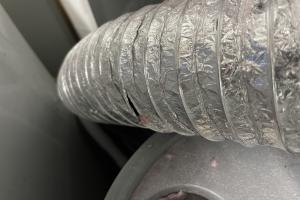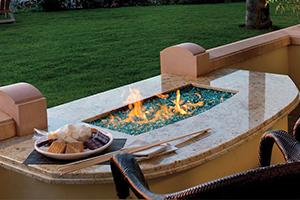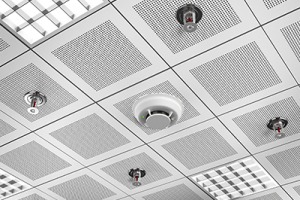Focus on fire safety — fireworks
Every year in the United States, we celebrate the Fourth of July with community parades, picnics, barbecues, and fireworks — the things of which happy memories are made. Unfortunately, Independence Day also includes tragic events resulting from the use of fireworks. The safest way to enjoy them is through public displays conducted by professional pyrotechnicians hired by communities.
By the numbers: fireworks
- 12,900: Number of injuries caused by fireworks in 2017
- 36 percent of those injured by fireworks in 2017 were under 15 years of age.
- 18,500: Number of fires caused by fireworks per year
- $43 million: Average direct property loss caused by fireworks
Sources:
Who is most at risk?
In 2017, U.S. hospital emergency rooms treated an estimated 12,900 people for fireworks-related injuries. 67 percent of these injuries occurred between June and July. Of these:
- 70 percent were males and 30 percent were females.
- Children under 15 years old accounted for 36 percent of the estimated injuries.
- Children and young adults under 20 years old had 50 percent of the estimated injuries.
- An estimated 800 injuries were associated with firecrackers. Of these, an estimated 51 percent were associated with small firecrackers, 18 percent with illegal firecrackers, and 31 percent where the type of firecracker was not specified.
- An estimated 1,200 injuries were associated with sparklers and 300 with bottle rockets.
- The parts of the body most often injured were hands and fingers (estimated 31 percent), head, face, and ears (estimated 22 percent), legs (estimated 17 percent), eyes (estimated 14 percent), and arms (estimated 6 percent).
- More than half of the injuries were burns. Burns were the most common injury to hands, fingers and arms.
- Most patients were treated at the emergency department and then released. An estimated 14 percent of patients were treated and transferred to another hospital or admitted to the hospital.
How and why do these injuries occur?
Did you know the tip of a sparkler burns at a temperature of about 1,200°F? This is hot enough to cause third degree burns.
- Availability — In spite of federal regulations and varying state prohibitions, many types of fireworks are still accessible to the public. Distributors often sell fireworks near state borders, where laws prohibiting sales on either side of the border may differ.
- Fireworks type — Among the various types of fireworks, some of which are sold legally in some states, bottle rockets can fly into peoples’ faces and cause eye injuries. Sparklers can ignite clothing and firecrackers can injure the hands or face if they explode at close range.
- Being too close — Injuries may result from being too close to fireworks when they explode; for example, when someone leans over to look more closely at a firework that has been ignited, or when a misguided bottle rocket hits a nearby person.
- Lack of physical coordination — Younger children often lack the physical coordination to handle fireworks safely.
- Curiosity — Children are often excited and curious around fireworks, which can increase their chances of being injured (for example, when they re-examine a firecracker dud that initially fails to ignite).
- Experimentation — Homemade fireworks (ones made of the powder from several firecrackers) can lead to dangerous and unpredictable explosions.
What can I do?
The best way to protect your family is not to use any kind of fireworks at home. Attend public fireworks displays and leave the lighting to the professionals instead.
This material is provided for informational purposes only and does not provide any coverage or guarantee loss prevention. The examples in this material are provided as hypothetical and for illustration purposes only. The Hanover Insurance Company and its affiliates and subsidiaries (“The Hanover”) specifically disclaim any warranty or representation that acceptance of any recommendations contained herein will make any premises, or operation safe or in compliance with any law or regulation. By providing this information to you, The Hanover does not assume (and specifically disclaims) any duty, undertaking or responsibility to you. The decision to accept or implement any recommendation(s) or advice contained in this material must be made by you.
LC JAN 2019 12-139
171-0857 (11/18)
Related resources
Focus on fire safety — fireworks
Every year in the United States, we celebrate the Fourth of July with community parades, picnics, barbecues, and fireworks — the things of which happy memories are made. Unfortunately, Independence Day also includes tragic events resulting from the use of fireworks. The safest way to enjoy them is through public displays conducted by professional pyrotechnicians hired by communities.
By the numbers: fireworks
- 12,900: Number of injuries caused by fireworks in 2017
- 36 percent of those injured by fireworks in 2017 were under 15 years of age.
- 18,500: Number of fires caused by fireworks per year
- $43 million: Average direct property loss caused by fireworks
Sources:
Who is most at risk?
In 2017, U.S. hospital emergency rooms treated an estimated 12,900 people for fireworks-related injuries. 67 percent of these injuries occurred between June and July. Of these:
- 70 percent were males and 30 percent were females.
- Children under 15 years old accounted for 36 percent of the estimated injuries.
- Children and young adults under 20 years old had 50 percent of the estimated injuries.
- An estimated 800 injuries were associated with firecrackers. Of these, an estimated 51 percent were associated with small firecrackers, 18 percent with illegal firecrackers, and 31 percent where the type of firecracker was not specified.
- An estimated 1,200 injuries were associated with sparklers and 300 with bottle rockets.
- The parts of the body most often injured were hands and fingers (estimated 31 percent), head, face, and ears (estimated 22 percent), legs (estimated 17 percent), eyes (estimated 14 percent), and arms (estimated 6 percent).
- More than half of the injuries were burns. Burns were the most common injury to hands, fingers and arms.
- Most patients were treated at the emergency department and then released. An estimated 14 percent of patients were treated and transferred to another hospital or admitted to the hospital.
How and why do these injuries occur?
Did you know the tip of a sparkler burns at a temperature of about 1,200°F? This is hot enough to cause third degree burns.
- Availability — In spite of federal regulations and varying state prohibitions, many types of fireworks are still accessible to the public. Distributors often sell fireworks near state borders, where laws prohibiting sales on either side of the border may differ.
- Fireworks type — Among the various types of fireworks, some of which are sold legally in some states, bottle rockets can fly into peoples’ faces and cause eye injuries. Sparklers can ignite clothing and firecrackers can injure the hands or face if they explode at close range.
- Being too close — Injuries may result from being too close to fireworks when they explode; for example, when someone leans over to look more closely at a firework that has been ignited, or when a misguided bottle rocket hits a nearby person.
- Lack of physical coordination — Younger children often lack the physical coordination to handle fireworks safely.
- Curiosity — Children are often excited and curious around fireworks, which can increase their chances of being injured (for example, when they re-examine a firecracker dud that initially fails to ignite).
- Experimentation — Homemade fireworks (ones made of the powder from several firecrackers) can lead to dangerous and unpredictable explosions.
What can I do?
The best way to protect your family is not to use any kind of fireworks at home. Attend public fireworks displays and leave the lighting to the professionals instead.
This material is provided for informational purposes only and does not provide any coverage or guarantee loss prevention. The examples in this material are provided as hypothetical and for illustration purposes only. The Hanover Insurance Company and its affiliates and subsidiaries (“The Hanover”) specifically disclaim any warranty or representation that acceptance of any recommendations contained herein will make any premises, or operation safe or in compliance with any law or regulation. By providing this information to you, The Hanover does not assume (and specifically disclaims) any duty, undertaking or responsibility to you. The decision to accept or implement any recommendation(s) or advice contained in this material must be made by you.
LC JAN 2019 12-139
171-0857 (11/18)
Related resources
Focus on fire safety — fireworks
Every year in the United States, we celebrate the Fourth of July with community parades, picnics, barbecues, and fireworks — the things of which happy memories are made. Unfortunately, Independence Day also includes tragic events resulting from the use of fireworks. The safest way to enjoy them is through public displays conducted by professional pyrotechnicians hired by communities.
By the numbers: fireworks
- 12,900: Number of injuries caused by fireworks in 2017
- 36 percent of those injured by fireworks in 2017 were under 15 years of age.
- 18,500: Number of fires caused by fireworks per year
- $43 million: Average direct property loss caused by fireworks
Sources:
Who is most at risk?
In 2017, U.S. hospital emergency rooms treated an estimated 12,900 people for fireworks-related injuries. 67 percent of these injuries occurred between June and July. Of these:
- 70 percent were males and 30 percent were females.
- Children under 15 years old accounted for 36 percent of the estimated injuries.
- Children and young adults under 20 years old had 50 percent of the estimated injuries.
- An estimated 800 injuries were associated with firecrackers. Of these, an estimated 51 percent were associated with small firecrackers, 18 percent with illegal firecrackers, and 31 percent where the type of firecracker was not specified.
- An estimated 1,200 injuries were associated with sparklers and 300 with bottle rockets.
- The parts of the body most often injured were hands and fingers (estimated 31 percent), head, face, and ears (estimated 22 percent), legs (estimated 17 percent), eyes (estimated 14 percent), and arms (estimated 6 percent).
- More than half of the injuries were burns. Burns were the most common injury to hands, fingers and arms.
- Most patients were treated at the emergency department and then released. An estimated 14 percent of patients were treated and transferred to another hospital or admitted to the hospital.
How and why do these injuries occur?
Did you know the tip of a sparkler burns at a temperature of about 1,200°F? This is hot enough to cause third degree burns.
- Availability — In spite of federal regulations and varying state prohibitions, many types of fireworks are still accessible to the public. Distributors often sell fireworks near state borders, where laws prohibiting sales on either side of the border may differ.
- Fireworks type — Among the various types of fireworks, some of which are sold legally in some states, bottle rockets can fly into peoples’ faces and cause eye injuries. Sparklers can ignite clothing and firecrackers can injure the hands or face if they explode at close range.
- Being too close — Injuries may result from being too close to fireworks when they explode; for example, when someone leans over to look more closely at a firework that has been ignited, or when a misguided bottle rocket hits a nearby person.
- Lack of physical coordination — Younger children often lack the physical coordination to handle fireworks safely.
- Curiosity — Children are often excited and curious around fireworks, which can increase their chances of being injured (for example, when they re-examine a firecracker dud that initially fails to ignite).
- Experimentation — Homemade fireworks (ones made of the powder from several firecrackers) can lead to dangerous and unpredictable explosions.
What can I do?
The best way to protect your family is not to use any kind of fireworks at home. Attend public fireworks displays and leave the lighting to the professionals instead.
This material is provided for informational purposes only and does not provide any coverage or guarantee loss prevention. The examples in this material are provided as hypothetical and for illustration purposes only. The Hanover Insurance Company and its affiliates and subsidiaries (“The Hanover”) specifically disclaim any warranty or representation that acceptance of any recommendations contained herein will make any premises, or operation safe or in compliance with any law or regulation. By providing this information to you, The Hanover does not assume (and specifically disclaims) any duty, undertaking or responsibility to you. The decision to accept or implement any recommendation(s) or advice contained in this material must be made by you.
LC JAN 2019 12-139
171-0857 (11/18)
Related resources
Focus on fire safety — fireworks
Every year in the United States, we celebrate the Fourth of July with community parades, picnics, barbecues, and fireworks — the things of which happy memories are made. Unfortunately, Independence Day also includes tragic events resulting from the use of fireworks. The safest way to enjoy them is through public displays conducted by professional pyrotechnicians hired by communities.
By the numbers: fireworks
- 12,900: Number of injuries caused by fireworks in 2017
- 36 percent of those injured by fireworks in 2017 were under 15 years of age.
- 18,500: Number of fires caused by fireworks per year
- $43 million: Average direct property loss caused by fireworks
Sources:
Who is most at risk?
In 2017, U.S. hospital emergency rooms treated an estimated 12,900 people for fireworks-related injuries. 67 percent of these injuries occurred between June and July. Of these:
- 70 percent were males and 30 percent were females.
- Children under 15 years old accounted for 36 percent of the estimated injuries.
- Children and young adults under 20 years old had 50 percent of the estimated injuries.
- An estimated 800 injuries were associated with firecrackers. Of these, an estimated 51 percent were associated with small firecrackers, 18 percent with illegal firecrackers, and 31 percent where the type of firecracker was not specified.
- An estimated 1,200 injuries were associated with sparklers and 300 with bottle rockets.
- The parts of the body most often injured were hands and fingers (estimated 31 percent), head, face, and ears (estimated 22 percent), legs (estimated 17 percent), eyes (estimated 14 percent), and arms (estimated 6 percent).
- More than half of the injuries were burns. Burns were the most common injury to hands, fingers and arms.
- Most patients were treated at the emergency department and then released. An estimated 14 percent of patients were treated and transferred to another hospital or admitted to the hospital.
How and why do these injuries occur?
Did you know the tip of a sparkler burns at a temperature of about 1,200°F? This is hot enough to cause third degree burns.
- Availability — In spite of federal regulations and varying state prohibitions, many types of fireworks are still accessible to the public. Distributors often sell fireworks near state borders, where laws prohibiting sales on either side of the border may differ.
- Fireworks type — Among the various types of fireworks, some of which are sold legally in some states, bottle rockets can fly into peoples’ faces and cause eye injuries. Sparklers can ignite clothing and firecrackers can injure the hands or face if they explode at close range.
- Being too close — Injuries may result from being too close to fireworks when they explode; for example, when someone leans over to look more closely at a firework that has been ignited, or when a misguided bottle rocket hits a nearby person.
- Lack of physical coordination — Younger children often lack the physical coordination to handle fireworks safely.
- Curiosity — Children are often excited and curious around fireworks, which can increase their chances of being injured (for example, when they re-examine a firecracker dud that initially fails to ignite).
- Experimentation — Homemade fireworks (ones made of the powder from several firecrackers) can lead to dangerous and unpredictable explosions.
What can I do?
The best way to protect your family is not to use any kind of fireworks at home. Attend public fireworks displays and leave the lighting to the professionals instead.
This material is provided for informational purposes only and does not provide any coverage or guarantee loss prevention. The examples in this material are provided as hypothetical and for illustration purposes only. The Hanover Insurance Company and its affiliates and subsidiaries (“The Hanover”) specifically disclaim any warranty or representation that acceptance of any recommendations contained herein will make any premises, or operation safe or in compliance with any law or regulation. By providing this information to you, The Hanover does not assume (and specifically disclaims) any duty, undertaking or responsibility to you. The decision to accept or implement any recommendation(s) or advice contained in this material must be made by you.
LC JAN 2019 12-139
171-0857 (11/18)





